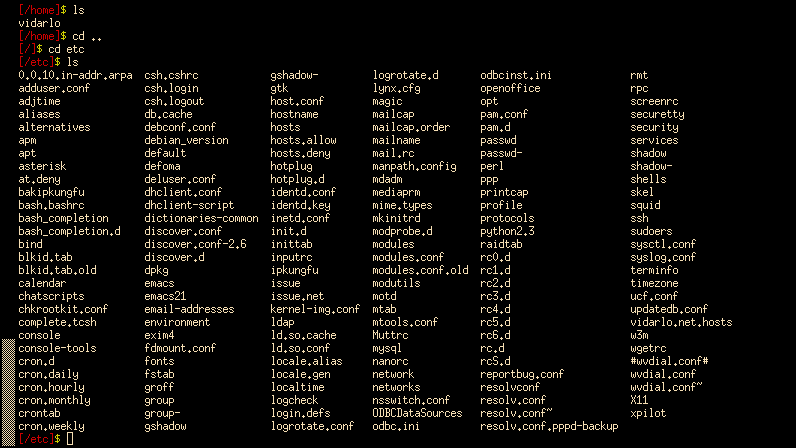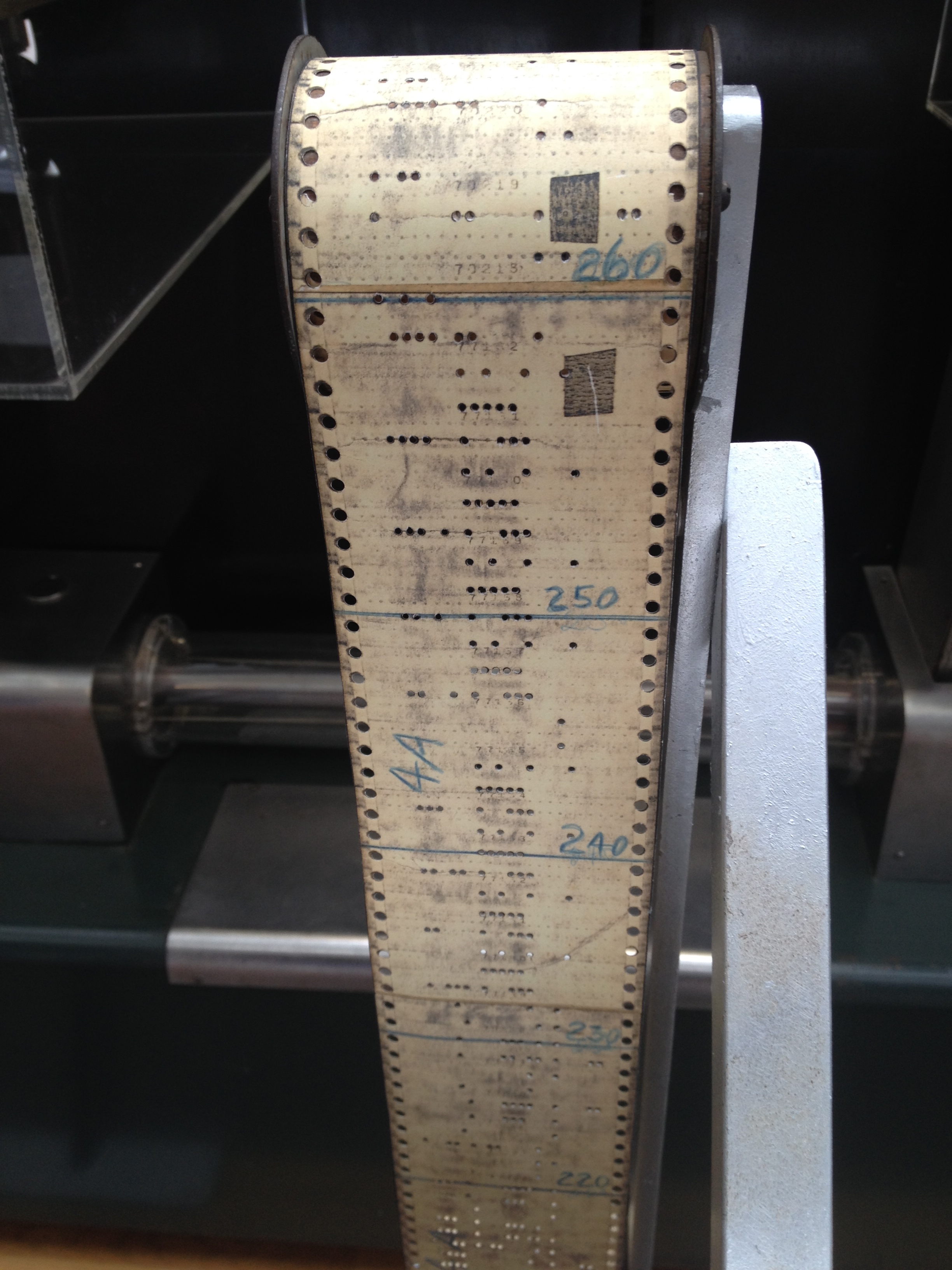|
GT-Power
GT Power is a bulletin board system (BBS) and dial-up telecommunications/terminal application for MS-DOS. It was first introduced in the 1980s by P & M Software, founded by Paul Meiners. GT Power can be used both to host a BBS as well as to connect to other BBS systems via its full-featured dial-up "terminal mode". GT Power was a shareware package that required a registration fee in order to access its proprietary network mail transport/handling software and, by default, the ''GT Power Network''. The software is distributed in two "flavors": a terminal-only version, nicknamed ''GTO'', and the full-featured host and terminal version. The source code for GT Power was sold twice during the late 1990s, again in 2008 and is currently the property of Tom Watt. Although GT Power was written to run under DOS, it is also quite capable under the Microsoft Windows (versions with DOS support) and OS/2 (including eComStation and ArcaOS) operating systems. When it is running under OS/ ... [...More Info...] [...Related Items...] OR: [Wikipedia] [Google] [Baidu] |
MS-DOS
MS-DOS ( ; acronym for Microsoft Disk Operating System, also known as Microsoft DOS) is an operating system for x86-based personal computers mostly developed by Microsoft. Collectively, MS-DOS, its rebranding as IBM PC DOS, and a few operating systems attempting to be compatible with MS-DOS, are sometimes referred to as "DOS" (which is also the generic acronym for disk operating system). MS-DOS was the main operating system for IBM PC compatibles during the 1980s, from which point it was gradually superseded by operating systems offering a graphical user interface (GUI), in various generations of the graphical Microsoft Windows operating system. IBM licensed and re-released it in 1981 as PC DOS 1.0 for use in its PCs. Although MS-DOS and PC DOS were initially developed in parallel by Microsoft and IBM, the two products diverged after twelve years, in 1993, with recognizable differences in compatibility, syntax, and capabilities. Beginning in 1988 with DR-DOS, Co ... [...More Info...] [...Related Items...] OR: [Wikipedia] [Google] [Baidu] |
BBS Door
In a bulletin board system (BBS), a door is an interface between the BBS software and an external application. The term is also used to refer to the external application, a computer program that runs outside of the main bulletin board program. Sometimes called ''external programs'', doors are the most common way to add games, utilities, and other extensions to BBSes. Because BBSes typically depended on the telephone system, BBSes and door programs tended to be local in nature, unlike modern Internet games and applications. From the 1990s on, most BBS software had the capability to "drop to" doors. Several standards were developed for passing connection and user information to doors; this was usually done with "dropfiles", small binary or text files dropped into known locations in the BBS's file system. Most doors were responsible for operating the serial port or other communications device directly until returning control to the BBS. Later development of FOSSIL drivers have allowe ... [...More Info...] [...Related Items...] OR: [Wikipedia] [Google] [Baidu] |
File Transfer Protocol
The File Transfer Protocol (FTP) is a standard communication protocol used for the transfer of computer files from a server to a client on a computer network. FTP is built on a client–server model architecture using separate control and data connections between the client and the server. FTP users may authenticate themselves with a clear-text sign-in protocol, normally in the form of a username and password, but can connect anonymously if the server is configured to allow it. For secure transmission that protects the username and password, and encrypts the content, FTP is often secured with SSL/TLS ( FTPS) or replaced with SSH File Transfer Protocol (SFTP). The first FTP client applications were command-line programs developed before operating systems had graphical user interfaces, and are still shipped with most Windows, Unix, and Linux operating systems. Many dedicated FTP clients and automation utilities have since been developed for desktops, servers, mobile devices, ... [...More Info...] [...Related Items...] OR: [Wikipedia] [Google] [Baidu] |
Remote Imaging Protocol
The Remote Imaging Protocol and its associated Remote Imaging Protocol Script language, RIP''scrip'', is a graphics language that provides a system for sending vector graphics over low-bandwidth links, notably modems. It was originally created by Jeff Reeder, Jim Bergman, and Mark Hayton of TeleGrafix Communications in Huntington Beach, California to enhance bulletin board systems and other applications. RIPscrip was introduced in 1992 and consisted of ASCII-text descriptions of vector-drawn graphics and images, along with facilities to create menus and clickable buttons. These were sent from the BBS instead of the more common ANSI color-coded text-mode screens, and were interpreted on the user's end by a RIP-enabled terminal program such as TeleGrafix's own RIPTerm. Lines of text appeared in one display, graphics in another. RIPscrip could not be used as the basis for a complete GUI, as it included no text editing system. RIPscript 1.5x was a text based wrapper around th ... [...More Info...] [...Related Items...] OR: [Wikipedia] [Google] [Baidu] |
ANSI Art
The American National Standards Institute (ANSI ) is a private non-profit organization that oversees the development of voluntary consensus standards for products, services, processes, systems, and personnel in the United States. The organization also coordinates U.S. standards with international standards so that American products can be used worldwide. ANSI accredits standards that are developed by representatives of other standards organizations, government agencies, consumer groups, companies, and others. These standards ensure that the characteristics and performance of products are consistent, that people use the same definitions and terms, and that products are tested the same way. ANSI also accredits organizations that carry out product or personnel certification in accordance with requirements defined in international standards. The organization's headquarters are in Washington, D.C. ANSI's operations office is located in New York City. The ANSI annual operating ... [...More Info...] [...Related Items...] OR: [Wikipedia] [Google] [Baidu] |
Terminal Emulation
A terminal emulator, or terminal application, is a computer program that emulates a video terminal within some other display architecture. Though typically synonymous with a shell or text terminal, the term ''terminal'' covers all remote terminals, including graphical interfaces. A terminal emulator inside a graphical user interface is often called a terminal window. A terminal window allows the user access to a text terminal and all its applications such as command-line interfaces (CLI) and text user interface (TUI) applications. These may be running either on the same machine or on a different one via telnet, ssh, dial-up, or over a direct serial connection. On Unix-like operating systems, it is common to have one or more terminal windows connected to the local machine. Terminals usually support a set of escape sequences for controlling color, cursor position, etc. Examples include the family of terminal control sequence standards known as ECMA-48, ANSI X3.64 or ... [...More Info...] [...Related Items...] OR: [Wikipedia] [Google] [Baidu] |
VT-52
The VT50 was a CRT-based computer terminal introduced by Digital Equipment Corporation (DEC) in July 1974. It provided a display with 12 rows and 80 columns of upper-case text, and used an expanded set of control characters and forward-only scrolling based on the earlier VT05. DEC documentation of the era refers to the terminals as the DECscope, a name that was otherwise almost never seen. The VT50 was sold only for a short period before it was replaced by the VT52 in September 1975. The VT52 provided a screen of 24 rows and 80 columns of text and supported all 95 ASCII characters as well as 32 graphics characters, bi-directional scrolling, and an expanded control character system. DEC produced a series of upgraded VT52's with additional hardware for various uses. The VT52 family was followed by the much more sophisticated VT100 in 1978. Description The VT50 supported asynchronous communication at baud rates up to 9600 bits per second and did not require any fill charac ... [...More Info...] [...Related Items...] OR: [Wikipedia] [Google] [Baidu] |
ANSI
The American National Standards Institute (ANSI ) is a private non-profit organization that oversees the development of voluntary consensus standards for products, services, processes, systems, and personnel in the United States. The organization also coordinates U.S. standards with international standards so that American products can be used worldwide. ANSI accredits standards that are developed by representatives of other standards organizations, government agencies, consumer groups, companies, and others. These standards ensure that the characteristics and performance of products are consistent, that people use the same definitions and terms, and that products are tested the same way. ANSI also accredits organizations that carry out product or personnel certification in accordance with requirements defined in international standards. The organization's headquarters are in Washington, D.C. ANSI's operations office is located in New York City. The ANSI annual operatin ... [...More Info...] [...Related Items...] OR: [Wikipedia] [Google] [Baidu] |
Third Party Software Component
In computer programming, a third-party software component is a reusable software component developed to be either freely distributed or sold by an entity other than the original vendor of the development platform. The third-party software component market thrives because many programmers believe that component-oriented development improves the efficiency and the quality of developing custom applications. Common third-party software includes macros, bots, and software/scripts to be run as add-ons for popular developing software. See also *Middleware * Enterprise Java Beans * VCL / CLX *KParts (KDE) *Video-game third-party developers *Third-party source In commerce, a "''third-party source''" means a supplier (or service provider) who is not directly controlled by either the seller (first party) nor the customer/ buyer (second party) in a business transaction. The third party is considered ind ...Online all programming languages and their third party libraries includes a guide. ... [...More Info...] [...Related Items...] OR: [Wikipedia] [Google] [Baidu] |
Bug Fix
A patch is a set of changes to a computer program or its supporting data designed to update, fix, or improve it. This includes fixing security vulnerabilities and other bugs, with such patches usually being called bugfixes or bug fixes. Patches are often written to improve the functionality, usability, or performance of a program. The majority of patches are provided by software vendors for operating system and application updates. Patches may be installed either under programmed control or by a human programmer using an editing tool or a debugger. They may be applied to program files on a storage device, or in computer memory. Patches may be permanent (until patched again) or temporary. Patching makes possible the modification of compiled and machine language object programs when the source code is unavailable. This demands a thorough understanding of the inner workings of the object code by the person creating the patch, which is difficult without close study of the source ... [...More Info...] [...Related Items...] OR: [Wikipedia] [Google] [Baidu] |
Key Code
A key code is a series of alphanumeric characters used by locksmiths to create a key. There are two kinds of key codes: blind codes and bitting codes.2A8G Blind codes These are codes that require a chart or computer program to translate the blind code to a bitting code, which is used to create the actual key. Most key codes are blind codes, and publication of code books or software is restricted to licensed locksmiths in most jurisdictions for security reasons. Some locksmiths also create their own blind coding systems for identifying key systems they installed, or for customer identification and authorization in high security systems. Example: 23N7 (General Motors) or X2100 (Nissan) are examples of blind codes used for automotive ignition keys. Many computer and manually generated master keying A master key operates a set of several locks. Usually, there is nothing special about the key itself, but rather the locks into which it will fit. These master-keyed locks are c ... [...More Info...] [...Related Items...] OR: [Wikipedia] [Google] [Baidu] |


